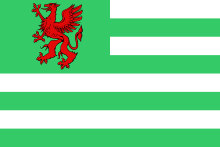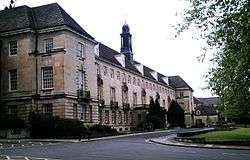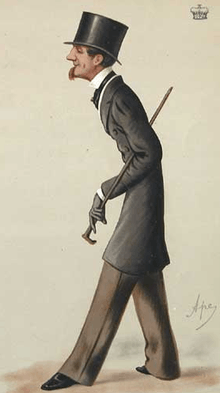Wiltshire County Council
Wiltshire County Council (established in 1889) was the county council of Wiltshire in the South West of England, an elected local Government body responsible for most local government services in the county.
Wiltshire County Council | |
|---|---|
 Wiltshire County Council Armorial Banner | |
| Type | |
| Type | |
| History | |
| Founded | 1 April 1889 |
| Disbanded | 1 April 2009 |
| Succeeded by | Wiltshire Council |
| Meeting place | |
 | |
| County Hall Bythesea Road Trowbridge Wiltshire | |

As a result of the 2009 restructuring of local government in some parts of England, the council was merged with four district councils into a new unitary authority for Wiltshire with effect from 1 April 2009. So that it would inherit existing contracts without a break, the new authority was then treated as a "continuing authority", and it covers exactly the same area, although renamed "Wiltshire Council". Although at first almost all departments continued little changed, after 2009 most services were substantially changed and relocated into fewer buildings around Wiltshire.
History
County Councils were first introduced in England and Wales with full powers from 22 September 1889 as a result of the Local Government Act 1888, taking over administrative functions until then carried out by the unelected Quarter Sessions.[1] The areas they covered were termed administrative counties and were not in all cases identical to the traditional shire counties, but in Wiltshire the whole 'ceremonial county' came under the authority of the new council.
The first elections to the new county council were held on 23 January 1889, with sixty seats available, but only thirty-two of them were contested. Among those elected unopposed were the 4th Marquess of Bath, the 13th Earl of Pembroke, the 18th Earl of Suffolk, Sir Thomas Grove, 1st Baronet, M. P., Sir Charles Hobhouse, 4th Baronet, and Sir R. H. Pollen, Bart.[2]
The first provisional meeting of the council was held at Devizes on 31 January 1889, with all of the members present, when Lord Bath was elected as chairman. Several voting aldermen were appointed, all from outside the elected members of the council.[3]
The County Council acquired Arlington House in The Parade in Trowbridge as a home for the County Council in 1896;[4] subsequent extensions included a block of offices on land behind the building, completed in 1900, and a block of offices adjacent to the building completed in 1913.[5]
Schools (both elementary and higher-grade) were added to the County Council's responsibilities by the Education Act 1902, which created local education authorities to replace the earlier School Boards. And until the 1990s the county council was also responsible for operating Colleges of Further Education.
In 1930, the members of the county council decided by 45 votes to 27 to build a new county hall in Devizes, which is near the geographical centre of Wiltshire, and not at Trowbridge, very near its western edge. However, construction was delayed, and in 1933 the decision was reversed in favour of Trowbridge, on the grounds that it was better served by rail services.[6] A site of several acres was bought in Bythesea Road, Trowbridge, not far from the railway station, for £1,650, and a new County Hall designed by Philip Dalton Hepworth, perhaps inspired by a building in Amsterdam, was begun in 1938 and finished in 1940 at a cost of £150,000. Between 1940 and 1943, the new building, built in a pale stone, was seen as a potential landmark for German aircraft, so was disguised by covering it with camouflage nets.[7][8] In 1937, Wiltshire County Council was granted a coat of arms.[9]
Throughout its existence, Wiltshire County Council was responsible for the more strategic local services of Wiltshire, with a changing pattern of lower-tier authorities existing alongside it within its area and responsible for other more local services, such as waste collection. Until 1974, Wiltshire had a large number of urban district and rural district councils. In 1974, local government was reorganised in England and Wales generally, and in Wiltshire dozens of former urban and rural districts were amalgamated into five district councils: Kennet, North Wiltshire, Salisbury, West Wiltshire and Thamesdown.
The council was controlled by the Conservatives from 2000 until 2009 and from 2005 was led by Jane Scott. She became the first leader of the new Wiltshire Council.
Position of Swindon
The Borough of Swindon, previously known as Thamesdown, remains part of the ceremonial county of Wiltshire. It was part of the county council's area from 1889 until 1997, when it was reorganised into a new single-tier unitary authority. This had the effect of taking almost one third of Wiltshire's population out of the administrative county. After 1997, Swindon was still treated as being part of Wiltshire for ceremonial purposes (for instance, it still shares a Lord Lieutenant), but the County Council no longer provided any local services in Swindon, so members were no longer elected to it from there.
Functions
By the time it was merged into the new Wiltshire Council unitary authority, Wiltshire County Council provided a wide range of services, including education, libraries, youth services, social services, highway maintenance, waste disposal, emergency planning, consumer protection and town and country planning for matters to do with minerals, waste, highways and education. This made it one of the largest employers in Wiltshire, with an annual budget in 2007 of some £300 million.
The working capital still employed by the Wiltshire Historic Buildings Trust originated in a single grant made by the County Council at the time of the Trust's foundation in 1967, funding which has been described by the Trust's President Lord Lansdowne as "a revolving capital sum".[10]
Elections
Since 1889, members were elected for a term of office, with elections held all together (initially every three years, later every four years) on the "first past the post" system. Until the 1970s, the elected members chose aldermen, whose term of office was for six years, and who once appointed were also voting members of the council. This form of membership was ended by the Local Government Act 1972, so that after 1974 only honorary (that is, non-voting) aldermen could be appointed.
Until 2005, all of the county's electoral divisions elected a single member, but following a boundary review in 2004 three divisions (Salisbury South, Salisbury East, and Trowbridge East) elected two members each. The final size of the council was forty-nine members. The successor authority, Wiltshire Council, was established in 2009 with a total of ninety-eight members.
- 1973 Wiltshire County Council election
- 1977 Wiltshire County Council election
- 1981 Wiltshire County Council election
- 1985 Wiltshire County Council election
- 1989 Wiltshire County Council election
- 1993 Wiltshire County Council election
- 1997 Wiltshire County Council election
- 2001 Wiltshire County Council election
- 2005 Wiltshire County Council election
Political control
.png)
At its end in 2009, the council consisted of thirty Conservatives, fourteen Liberal Democrats, three Labour Party members and two Independents. The Conservatives held most of the more rural areas while the Liberal Democrats held several towns, including Trowbridge, Chippenham and Bradford-on-Avon. The divisions of Westbury Ham & Dilton Marsh and Holt & Paxcroft (both mixed urban and rural areas) elected the two Independents, while the three Labour members held their seats in the city of Salisbury and the towns of Melksham and Devizes.[11]
| Year | Conservative Party | Liberal Democrats | Labour | Independent |
|---|---|---|---|---|
| 2009 |
History of political control
- May 1973 to May 1985: Conservative[12]
- May 1985 to May 1989: No overall control, Liberal/SDP minority administration with tacit Labour support[12]
- May 1993 to May 1995: No overall control, informal cross-party administration between the Conservative Party, Liberal Democrats and Labour Party
- May 1995 to April 1997 No overall control, minority Liberal Democrat administration
- April 1997 to May 1997: Liberal Democrat
- May 1997 to May 1998: No overall control, with Liberal Democrat and Labour administration
- May 1998 to January 2000: No overall control, with Conservative and Independent administration
- January 2000 to 2009: Conservative
2009 changes
Wiltshire's previous "two tier" system of local government was typical of English shire counties, with the area it covered being sub-divided (since the separation of Swindon) into four local government districts. However, the Department for Communities and Local Government announced on 25 July 2007 that with effect from 1 April 2009 Wiltshire would be served by a new unitary authority, replacing the county council and the four district councils.[13]
As Wiltshire County Council was designated as a "continuing authority", its 48 outgoing county councillors remained in office until the 4 June 2009 elections, whereas district councillors ceased to hold office on 31 March 2009.
List of notable members
- Jack Ainslie 1964–1993 (chairman, 1986–1990)[14]
- Nigel Anderson 1953–1983 (chairman, 1980–1985)[15]
- John Thynne, 4th Marquess of Bath (chairman, 1889–1896)[2]
- Thomas Thynne, 5th Marquess of Bath (chairman, 1906–1946)
- Brigadier Robert Baddeley 1989–2001 (chairman, 1999–2000)
- John Lindow Calderwood (chairman, 1949–1960)[16]
- Sir Henry Langton, later Calley 1955–1973 (chairman, 1969–1974)
- Sir Charles C. Chitham 1950s (previously a policeman in British India)[17]
- John Manningham-Buller, 2nd Viscount Dilhorne 1967–1970
- Edmond Fitzmaurice, 1st Baron Fitzmaurice (chairman, 1896–1906)
- George Fuller 19th century (also member of parliament for Westbury)
- Sir Thomas Grove, 1st Baronet (el. 1889)[2]
- Brigadier Robert Hall (chairman, 2008–2009)
- Sir Charles Hobhouse, 4th Baronet (el. 1889), also member of parliament for Devizes)[2]
- Sir Charles Morrison 1958–1964 (later member of parliament for Devizes)[18]
- Levi Lapper Morse (Alderman to 1913, also member of parliament for Wilton)
- William Ewart Morse (also briefly member of parliament for Bridgwater)
- Christopher Newbury 1997–2009 (also member of Council of Europe)
- George Herbert, 13th Earl of Pembroke (elected 1889)[2]
- Sidney Herbert, 16th Earl of Pembroke (alderman, 1954–1967)[19]
- Nevil Story Maskelyne 1889–1904 (also member of parliament for Cricklade 1880–1892)
- James Morrison, 2nd Baron Margadale 1973–1977[20]
- Charles Nicholas Paul Phipps (to 1913, previously member of parliament for Westbury)[16]
- Sir Richard Hungerford Pollen, 4th Baronet (el. 1889)[2]
- Myles Ponsonby CBE (1988–1993), previously British Ambassador to Mongolia.[21]
- Fleur de Rhé-Philipe 1997–2009[11]
- Sir Richard Hungerford Pollen, 4th Baronet (elected 1889)[2]
- Francis Edward Newman Rogers 1894–1911 (also member of parliament for Devizes 1906–1910)
- Mary Salisbury 1963–2001 (not continuous) (chairman, 1990–1993)[22]
- Jane Scott, Baroness Scott of Bybrook, 1997–2009 (leader, 2003–2009)[23]
- Sir Geoffrey Ernest Tritton, 3rd Baronet 1950s[17]
- Earl of Shelburne, later 9th Marquess of Lansdowne (1970–1985)
- Henry Howard, 18th Earl of Suffolk (el. 1889)[2]
- Robert Syms 1985–1997 (member of parliament for Poole since 1997)
- Group Captain Frank Willan 1961–1981 (chairman, 1973–1979)
- R. S. A. Williams 1945–1952 (previously member of parliament for Sevenoaks)
- Percy Wyndham (early 20th century, also a member of parliament)
See also
| Wikimedia Commons has media related to Wiltshire. |
- Wiltshire Council
- Wiltshire local elections
- 2009 Wiltshire Council election
References
- Edwards, John (1955). 'County' in Chambers's Encyclopedia. LONDON: George Newnes. pp. 189–191.
- The Times, 19 January 1889; pg. 12; col A.
- The Times, 1 February 1889, pg. 10, col D.
- Historic England. "Arlington House, Trowbridge (1364231)". National Heritage List for England. Retrieved 13 August 2019.
- Chettle, H F; Powell, W R; Spalding, P A; Tillott, P M (1953). "'Parishes: Trowbridge', in A History of the County of Wiltshire". London: British History Online. pp. 125–171. Retrieved 23 August 2019.
- Russell Lincoln Ackoff, Systems and management annual (1974), p. 380
- When was County Hall in Trowbridge built please?, at wiltshire.gov.uk
- R. B. Pugh and Elizabeth Crittall (editors), A History of the County of Wiltshire, vol. 7 (1953) Trowbridge online
- Civic Heraldry of England and Wales – Wiltshire page at civicheraldry.co.uk
- Marquess of Lansdowne, Foreword to Wiltshire Historic Buildings Trust 1967–2007 (2007), online at whbt.org.uk
- Councillors by Name, Division, Party (dead link) at wiltshire.gov.uk
- The Times, 11 May 1985; pg. 2; col C
- Towards One Council at onecouncilforwiltshire.co.uk
- Graham, Christopher, Jack Ainslie, Old-school local government leader from The Independent dated Monday, 9 April 2007 (online edition)
- Former High Sheriff dies at 88, Salisbury Journal website, 4 June 2008
- Wiltshire County Council, Clerk's Department, at nationalarchives.gov.uk
- Warminster, Westbury, and District Directory 1960–61 (B. Lansdown & Sons, 1960), p. 7
- Charles Morrison obituary, telegraph.co.uk
- PEMBROKE, 16th Earl of, in Who Was Who, A & C Black, 1920–2008; online edition by Oxford University Press, December 2007, accessed 26 Sept 2009
- Lord Margadale, obituary in The Telegraph, dated 9 April 2003, accessed 10 November 2016
- 'Ponsonby, Myles Walter', in Who Was Who online edition (subscription site)
- OBITUARY: Mrs Mary Salisbury at wiltshiretimes.co.uk
- PR 1220 Wiltshire County Council elects a new leader (Tuesday 15 July 2003) at wiltshire.gov.uk
Bibliography
- K. H. Rogers. Wiltshire County Council: The First Hundred Years (Trowbridge: WCC, 1989)
External links
- Wiltshire.gov.uk (official web site)
.png)
.png)
.png)
.png)
.png)
.png)